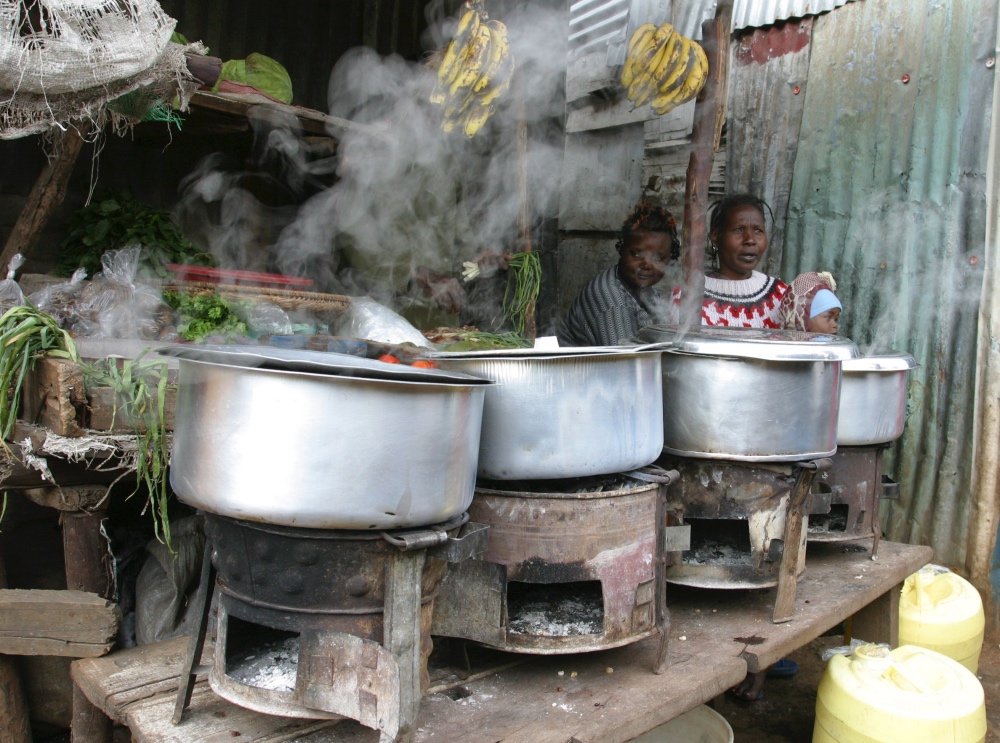Nairobi, Kenya
Thomson Reuters Foundation
More than 21,500 Kenyans die each year from cooking with traditional fuels like charcoal and firewood, new government data showed on Tuesday, as authorities pledged to meet a global goal of universal access to clean cooking energy by 2030.
The health risks were greatest in rural areas, where 90 per cent of households use wood stoves, compared to 70 per cent nationwide, Kenya’s first household survey on energy usage in cooking by the energy ministry and the Clean Cooking Association of Kenya found.

Women sit next to their cooking stoves at the sprawling Kibera slums in Kenya’s capital Nairobi, on 8th June, 2009. PICTURE: Reuters/Noor Khamis
It also found that 80 per cent of households relied solely on either charcoal or firewood as their primary cooking fuel, with 68 billion shillings ($US660 million) of charcoal consumed each year.
Kenya’s energy minister Charles Keter said the situation was “grave” and called for more focus on providing clean energy options, such as gas and electricity, to the poor.
“This data underlines the great exposure to harmful pollutants which account for about over 21,560 deaths annually,” he said, launching the survey at a conference on clean cooking.
The World Health Organization says three billion people globally cook with solid fuels such as charcoal and coal on open fires or traditional stoves, producing high levels of carbon monoxide, which kills about four million people a year.
Countries have committed to ensure universal access to clean, modern energy for cooking by the year 2030 as part of 17 global development goals, but low levels of investment in the clean cooking sector are hindering progress.
The widespread use of dirty fuels also contributes to climate change and deforestation, according to energy experts.
Government officials said Kenya has committed to reduce its greenhouse gas emissions by 30 per cent – where clean cooking will account for about 14 per cent – under the Paris agreement on climate change, and it hopes to meet this target by 2028.
Rohit Khanna from the World Bank’s Energy Sector Management Assistance Program said it was an “orphan” and “invisible” sector as those most affected were poor women and children.
“It is not acceptable as a matter of human dignity, of public health, of environmental damage, of gender equality and of economic harm, that access to clean cooking remains a failing target,” said Khanna.
“Half of the four million people who die every year are children under the age of five…Yet, if current trends continue, 2.2 billion people will still not have access to modern energy cooking services by 2030.”
The number of Kenyans killed by dirty stoves and fuels is double that of Uganda, which has a similar sized population, according to the Clean Cooking Alliance, which is promoting reform.





